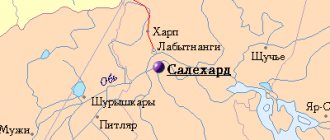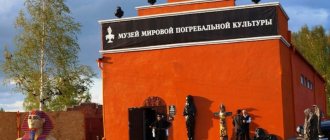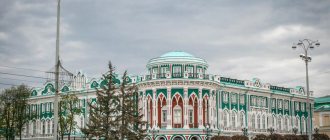The city, located on the Bolshoy Kinel River, was first mentioned in a decree issued by the provincial chancellery in 1748. It concerned one settlement in a settlement in which people did not know their kinship.
During the uprising of the Yaik Cossacks, which in 1773 developed into a peasant war led by Pugachev, which lasted until 1775, the residents of the Buguruslanskaya settlement supported the rebels, and the tragic ending of those events was the capture of the city by troops commanded by Major General Golitsyn.
During the period of its development, this historical city has experienced many events worthy of attention. Where is Buguruslan? You can find information about this in this article.
Story
In 1781, the settlement became the center of a fairly large county and received the status of a city, which was part of the Ufa governorship. In the winter of 1796, the urban-type settlement of Buguruslan was included in the Orenburg province, and it was assigned to the Samara province in 1850.
The population in those days was mainly engaged in trade, cattle breeding and arable farming. These places were famous for their rich spring and autumn fairs. Peasants from nearby villages and hamlets brought their products to the fairgrounds to sell their products. There were also various merchant shops here - meat shops, gingerbread shops, leather shops, fur shops, etc. In the area, next to the shopping arcades, there were tea houses and taverns.
Where is the city of Buguruslan, which in 1822, built up with wooden buildings, was completely destroyed by fire? Revived from the ashes, it again began to grow and develop, largely thanks to the railway laid through it (along the left bank of the Kinel River). The first train passed through the Buguruslan station in the fall of 1888.
Buguruslan
In 1748, by decree of the Orenburg provincial chancellery, a settlement was founded on the Buguruslan River, not far from its confluence with the Mochegai River, which began to be called after the Buguruslan River. (This is probably in the place where the village of Mordovian Buguruslan is now located.) The settlement was populated by people, as they said then, who did not remember their kindred tribe, that is, runaway people: criminals who were hiding from punishment, serfs who fled from their landowners, deserters, Ural workers who left factories due to overwork, etc. Soon the settlement was moved to the site of modern Buguruslan on the Kinel River and from 1781 it began to be called a city.
The most likely interpretation of the name Buguruslan is as follows. The first part of bogu- (bugu-) should be translated into Russian with the word “bull”. Archaeological data indicate that in the past, bison and aurochs lived in the Urals, Bashkiria, the Orenburg province, Kazakhstan, the south of the European part of Russia and other places. Let's give specific facts. In the newspaper “Turgai Regional Gazette” for 1894 in No. 13 we read: “In the Turgai region (Kazakhstan. - B.M.) Turgai lived in the past, their skulls have been found...” [275, No. 13]. I. A. Kastanye [105] reported: near the Platovsky redoubt on the Samara River, “in addition to flint tools, many bones of two species of extinct bulls were found” (bison? tur?). In the note “Bison in the Urals” we read: “Bison were encountered near Yekaterinburg” [83]. Another issue of the same “Orenburg newspaper” [176, no. 724] says: “In the Orenburg region, the bones of a primitive bull (tur) are more often found.” The regional newspaper “Southern Ural” published an article “A find in a pit”, it reported: “In Novotroitsk, at the construction site of a blast furnace, excavator operator P.P. Korolenok extracted the bones of a wild bull, a bison, from the pit” [101]. Further, we can say with confidence that in the territory where the Buguruslanka River flows, bison lived in the past. On this basis the river got its name; the river Buguruslan is a literal translation of the name Byk-lion, Byk-hero, the river Zubrov, Zubrovka.
In 1781, when the Ufa governorate was established, the Buguruslan settlement was transformed into a district city of the Orenburg province, but in 1797 “the new city was left to the state.” Soon, in 1802, Buguruslan was restored as a county town in the Orenburg province, and in 1850 it was transferred to the newly created Samara province, retaining its title as a county town.
From 1851 to 1928, Buguruslan was part of the Samara province. The district was then simply huge - in the east its borders went beyond Abdulino, in the north - beyond the Volga-Bugulminskaya road, in the west - beyond the Krotovsko-Sergievskaya branch, in the south - beyond Pilyugino, Matveevka, Ponomarevka. For comparison, we can say that the current area of the district is six times smaller. There were 228 rivers and streams, 6 lakes on the territory of the county.
In 1811, the city's population was 1,300, in 1897 - 12,141, and in 1910 - 15,000. In Buguruslan there were soap factories and wax factories, and fairs were held. In the city there were the Intercession Convent, 2 churches, a spiritual school, a city 2-class school and 2 parish schools, a women's gymnasium and 2 hospitals.
During the Civil War, the headquarters of the 24th Division was located in the mansion of the merchant Suroshnikov on Moskovskaya Street, 39, and its commander, the hero of the Civil War G.D. Gai, lived. For battles on the Eastern Front, including for Buguruslan, he was awarded the Order of the Red Banner. One of the central streets of the city is now named after Guy. After the Civil War, G.D. Guy commanded the 7th Samara division named after the English proletariat. This division included the Buguruslan and Buzuluk regiments. Guy liked the young squadron commander of the 40th Buguruslan Regiment, Georgy Zhukov. Noting his successes, the division commander promoted Zhukov to the position of assistant commander. Then the famous commander, Marshal of the Soviet Union Georgy Konstantinovich Zhukov gratefully recalled the years of service under the command of the hero of the civil war G. D. Gai.
On March 18, 1919, the district military revolutionary committee was formed
On March 14, Kolchak’s troops, moving from the east, captured Ufa.
The Ufa provincial committee of the RCP (b) was evacuated to Buguruslan.
On April 15, Kolchak’s Western Army entered Buguruslan. All owners were restored to ownership.
On April 28, the Buguruslan operation unfolded, which marked the beginning of the complete defeat of Kolchak; 10 days earlier, Red Army intelligence managed to intercept secret dispatches from Kolchak’s headquarters, which reported a gap of 50 miles between the third and sixth white corps.
On April 30, the Red Army captured Pilyugino and Kuroyedovo. Commissioner of the 25th Division Dmitry Furmanov in his famous novel “Chapaev” called one of the chapters “To Buguruslan”. An integral part of this chapter included the essay “The Pilyugin Battle.” On the same day, the Buguruslan railway station was occupied by the Reds. Kolchak’s troops resisted from the northern bank of Kinel and from the Mikhailovskaya and Valentinovskaya heights.
Only on May 4, after heavy fighting, the Kolchakites left the city and retreated to Bugulma. “Like most cities, not only in these battles, but throughout the entire civil war, Buguruslan was taken by encircling movement,” Dmitry Furmanov wrote in the novel “Chapaev.” Battles rarely happened on the streets of big cities. The main battle, the last and decisive, usually broke out directly on the city approaches; and when this battle was unsuccessful for the defenders, the loser usually left, leaving the city without a fight in the hands of the winner. This was the case with Buguruslan.” Later, in one of his articles about M.F. Frunze, he wrote: “Further events showed what the Buguruslan strike was worth. Kolchak fell all over the front, and in the future the fight against Kolchak was already reaping the laurels of the Buguruslan victory.”
In 1928-1929, the city was part of the Middle Volga region (with its center in Samara), from 1929 to 1934 - part of the Middle Volga region (the center is also in Samara).
Since 1934, the city has been part of the Orenburg region (from 1938 to 1957 - Chkalov region).
In 1938-1941, the Bashkir-Tatar Pedagogical School operated in the city.
On August 6, 1942, the State Defense Committee (GKO) adopted a resolution on the construction of an oil refinery in Buguruslan. The deadlines for the construction of an important defense enterprise were set to be extremely strict - at the end of 1943 the plant was to be put into operation.
In December 1942, more than a thousand people were already working at the construction site. But there was a shortage of qualified builders and installers, as well as metal structures, pipes, cement, cables, and other scarce materials. Additional difficulties arose due to the sharply deteriorating situation at the front, with fierce fighting in the Caucasus and in the areas of Stalingrad. In the same year, the State Defense Committee decided to build a gas pipeline from Buguruslan to Kuibyshev, which became the second capital. Many central government institutions were evacuated here and an option was being prepared for the evacuation of the entire government.
On September 22, 1942, the State Defense Committee adopted a resolution “On measures to fully accelerate the increase in oil production at the Kazakhstanneftekombinat, Permneftekombinat and in the trusts “Buguruslanneft”, “Syzranneft”, “Ishimbayneft”, “Tuymazaneft”, “Turkmenneft”, “Kalininneft” and “ Voroshilovneft. Essentially, it was an extensive program to create a powerful oil-producing and oil-refining region in the Volga-Ural region “Second Baku”.
In 1942, there were already 270 wells in operation. In the first war year, compared with the previous year, oil production increased more than four times.
Buguruslan became the first city in the region in which gasification began during the war - first at industrial enterprises of the trust, at a bakery, mill, and other facilities, and then in residential buildings. On September 15, 1943, the country's first large gas pipeline went into operation, regular gas supplies began to enterprises, and then to residential buildings in Kuibyshev. The underground gas pipeline, laid in 1942-1943, operated for a long time - it provided the huge city with cheap fuel until the end of the war and in the post-war years. Later, Kuibyshev, whose population exceeded a million people, began to receive “blue fuel” through a powerful gas pipeline from Orenburg.
In 1944, the issue of building a gas pipeline from Buguruslan to Orenburg with a length of 240 km or 340 km through Buzuluk was considered. But due to an acute shortage of pipes, this project was abandoned[3].
In the summer of 1943, beekeepers from six collective farms in the Buguruslan region agreed to jointly buy a bomber. They deposited 120 thousand rubles into a special state bank account. In a letter to the State Defense Committee, they asked to hand over a combat vehicle to fellow countryman, military pilot Alexander Dyatlov. Dyatlov fought on this plane until the end of the war. And then, after graduating from the Leningrad Military Engineering Academy, he worked as a senior teacher at the Buguruslan Civil Aviation School.
During the Great Patriotic War, the Central Information Bureau for tracing evacuees operated in Buguruslan. During the Great Patriotic War, there were work columns of German special settlers in Buguruslan. Many Buguruslan residents served in the 358th Infantry Division formed in the Orenburg region. They fought in January 1942 on the Northwestern Front near the small town of Ostashkov, at the source of the Volga, and then in Belarus. Then on the Leningrad Front, on the Karelian Isthmus, they stormed the reinforced concrete fortifications of the “Mannerheim Line” and took part in the capture of Vyborg. The division was awarded the Order of the Red Banner and received the name Leningrad, and its rifle regiments - Vyborg.
Then the soldiers of the 358th Red Banner Leningrad liberated cities and villages in the northeastern regions of Poland, in East Prussia. Particularly memorable were the bloody battles for the fortified cities of Insterburg and Königsberg. In the summer of 1945, trains with regiments of the division, in an atmosphere of special secrecy, went to the Far East. After which it began to be called the Red Banner, Order of Suvorov, second degree, Leningrad-Khingan Division.
Now the city belongs to the Orenburg region.
origin of name
Information about where the city of Buguruslan is located is given later in the article. In the meantime, let's talk about the origin of the city's name.
The origin of the name is Turkic. Bugaarslan, which later transformed into Buguruslan, consists of the words “buga”, translated as “bull” and the word “arslan”, meaning “lion”. There is another version, according to which the word “bug” is translated as “urena floodplain” or “river flooding the floodplain.” The first word is often found in many toponyms, for example, Karbuga, Bikbuga, Bugulma, etc.
In addition, the word “arslan” can be used in the meaning of “mighty” or “brave”. In this regard, the word “Buguruslan” can be translated as “mighty river”. There are other spelling options for the name of the city: Boguruslan, Bogoroslan. Only in the 19th century was the modern spelling of the name established, and this last new one was received by the settlement from the name of the river that was located not far from this settlement.
In general, the name of the city is interpreted as “mighty river”. Local history scientists claim that the river was exactly like this in ancient times. This is confirmed by the writer S. Aksakov, who wrote that his grandfather bought a plot of land “along the Bolshoi Buguruslan River, fast, deep, and full of water.” It turns out that where Buguruslan is located, a large river used to flow.
Buguruslan. Versions about the origin of the city's name
A city in the Orenburg region with a population of almost 50 thousand people. By decree of the Orenburg Chancellery, that is, the body that carries out administration, the settlement was founded. This happened in 1748. The settlement was located on the Buguruslan River, which is why it was called the Buguruslan settlement.
The first settlers were unreliable people, criminals, robbers, runaways. Gradually, the settlement was located to the south, near the Bolshoi Kinel River. This is more fertile land. In 1781, the settlement received city status. Despite the “relocation”, the city retained its original name – Buguruslan. In different versions, the name of the city differed in pronunciation and spelling. Buguruslan, Boguruslan, Bogoroslan, Bogoruslan. Hence there are different versions of the origin of the name, including simple-minded ones. For example, there were versions that Boguruslan - because “given to the Russian God.” Scientific views agree that the name was formed from two Turkic roots. The first part is “bogu”, or “bugu”, and the second is “araslan”, or “arslan”. Among the Tatars, Bashkirs, Kalmyks and others, the common name is Araslan, Arslan, Araslanbek. This word translated means “lion”.
Author of the photo: Sergey Zhdanov. Other photos of the author can be viewed here: https://www.facebook.com/profile.php?id=100006482532819
The second meaning of the word “arslan” is not literally “lion”, but those qualities that are inherent in this animal, namely freedom, size, strength, power of the “king” of animals. In this meaning, this word was used to explain the size of some geographical object, for example, a mountain. Some scholars believe that “bugu” (“bogu”) means “garden.” Therefore, combining the two concepts, we get the “garden of lions.” But lions have never lived in that area. In another version, “to god” is “crooked”, or “humpbacked”, and also “river”. Thus, we get “lion-river”, that is, the power and tortuosity of the river is emphasized. But scientists don’t like this version much. Having a fast flow and many springs, the Buguruslan River is considered a small river. In the dictionary of V. A. Nikonov (Soviet linguist, poet, literary critic), the word “god” is interpreted as “bull”. Consequently, the name of the river can be interpreted as “bull-lion”, “bull-hero”. Bison and aurochs lived in that region. Perhaps the latest version is the most correct, who knows?
author of the article: Svetlana Kuznetsova.
Order now!
Your ad could be here!
https://nashural.ru Your advertisement will be seen by thousands of people a day
Interesting? Tell your friends!
Modern Buguruslan
And today this small city, carefully preserving its old traditions, is growing and continuing to develop. It can be called a student city, since more than 9,000 students acquire the necessary knowledge in its educational institutions. The population is about 50,000 people.
The city of Buguruslan is historically interesting, where the house of the merchant Shuvalov (early 19th century), the house of the famous nobleman Rychkov (late 19th century), and the building of a religious school (second half of the 19th century) are located.
In the 70s, in honor of the anniversary of Victory in the Second World War, an alley of military equipment appeared in Buguruslan. Among the cultural institutions in the city there is the Drama City Theater named after. Gogol N.V., local history museum, etc.
The mosque, the Church of the Assumption, the Cathedral of the Holy Trinity, a memorial sign in honor of the founding of Buguruslan, the Monument of Glory, a monument to well No. 1 (the first industrial oil of the Orenburg region was produced in Buguruslan) - all this is the pride of the city residents.
Where is Buguruslan located in Russia?
The city is located in the northwestern part of the Orenburg region. The distance from Orenburg is 260 kilometers, and from the border with the Samara region is 10 kilometers. It is 150 km from Buguruslan to Samara, 990 km to Moscow. This city is the administrative and cultural center of the Buguruslan district and the center of the urban district of Buguruslan. The Bolshoi Kinel River flows within the city's borders. The area of the city is 76 km2.
Geologically, Buguruslan is located on the Bugulma-Belebeevskaya Upland (southern slopes). The height of the southern and central parts of the city is 80 meters above sea level.
Cities
The city of Buguruslan is a city in the Orenburg region of Russia. The city is the administrative center of the Buguruslan municipal district, and the city of Buguruslan is part of an independent municipal entity within the Orenburg region - the Buguruslan urban district. Population - 52.1 thousand inhabitants (as of the end of 2011). The city is located on the southern slopes of the Bugulma-Belebeevskaya Upland, the Bolshoy Kinel River, 180 km from Samara, 360 km northwest of Orenburg and 1200 km from Moscow. Height above sea level is 80m. The city has the Buguruslan City Drama Theater named after N.V. Gogol, founded in 1898, the Buguruslan Museum of Local Lore, and the museum-apartment of M.V. Frunze (the former home of the merchant K.M. Suroshnikov). 30 km north of Buguruslan, on the left bank of the Buguruslanka River, between picturesque hills, stands the ancient (more than two centuries old) village of Aksakovo. The writer Sergei Timofeevich Aksakov spent his childhood years here, and his museum-reserve is located here. The surroundings of Buguruslan are often called Aksakov places. In the village of Sapozhkino there is a museum of the writer Dmitry Ivanovich Morsky-Malyshev, a native of this village. The village of Rychkovo is located approximately 40 km north of Buguruslan. The village of Rychkovo arose in the 60s of the 18th century.
It was founded by the Orenburg historian, geographer, ethnographer, economist, first corresponding member of the Russian Academy of Sciences (since 1759) - Pyotr Ivanovich Rychkov (1712-1777). Currently, the ruins of the estate and distillery have been preserved. During the Great Patriotic War, the Central Information Bureau for tracing evacuees operated in Buguruslan.
Education in the city of Buguruslan
Among the educational institutions in the city there are: branches of Orenburg State University (OSU) and Samara State Technical University (SamSTU), Buguruslan Flight School of Civil Aviation (BLUGA), Buguruslan Petroleum College, Pedagogical College, Medical College, Agricultural College, Vocational Lyceum and two vocational schools .
Economy of the city of Buguruslan
Buguruslan is one of the centers of the oil and gas industry in the Volga-Ural oil and gas region (oil was discovered in 1936). On July 25, 1937, the first commercial oil gusher was obtained from well No. 1 on the eastern outskirts of the city of Buguruslan from a depth of 285 m. Food industry enterprises: flour mill, meat processing plant, etc. Furniture factory. , "Basalt". In the Buguruslan region, wheat, buckwheat, sunflowers, potatoes, and onions are grown. They raise cattle and pigs.
Road communication is carried out along the roads P225 Samara - Buguruslan P246 Bugulma - "Teploye"
The railway connection is carried out through the Buguruslan station, built in 1888. Transportation is carried out by the Kuibyshev Railway (JSC Russian Railways). There is no air or river transport. City passenger transport is represented by 6 bus routes.
History of the city of Buguruslan
Founded at the end of 1748 as a settlement (Buguruslanskaya Sloboda). In 1781, the settlement was transformed into the city of Buguruslan, becoming the center of the Buguruslan district as part of the Ufa region of the Ufa governorship. Since 1796, it was part of the Buzuluk district of the Orenburg province, having lost the status of a county town. In 1802 it again became a district town within the Orenburg province. In 1851, Buguruslan was included in the newly created Samara province. In 1928, the city became part of the newly formed Middle Volga region. Since 1934, the city has been part of the Orenburg region (from 1938 to 1957 Chkalov region).
| Coat of arms of the city of Buguruslan - The modern coat of arms of Buguruslan 1782, based on the historical coat of arms of 1782. | Flag cities Buguruslan — A rectangular yellow panel with a width to length ratio of 2:3, along the vertical edges having blue stripes 1/5 of the length of the panel; in the center of the panel there is a red flower from the coat of arms of the region, and on the azure edges there is a yellow ear with a stem. Rationale for symbolism: In the Buguruslan district there is a museum-estate of the Russian writer S.T. Aksakov, a singer of Orenburg nature, whose talent is so dear to all residents of the region, Orenburg region and Russia, the author of the famous fairy tale “The Scarlet Flower”. The red flower in the coat of arms of the region, the familiar bend of its leaves, echoes the red heart in the coat of arms of the Aksakov family. Buguruslansky district is an agricultural region of the Orenburg region. The main activity of agricultural producers is the cultivation of grain crops. In this regard, the district’s coat of arms contains ears of wheat. Some scientists associate the origin of the name Buguruslan with the word “bug”, meaning “urema - floodplain overgrown with willow, sedge, willow bushes”, or “river with a wide wooded floodplain flooded by spring waters”. The azure edges of the district's coat of arms symbolically reflect not only this concept, but also the numerous floodplain lakes, ponds and springs located in the district. Gold is a symbol of strength, wealth, greatness, intelligence and insight. Azure is a symbol of lofty aspirations, sincerity, devotion, and rebirth. Red color is a symbol of holiday, beauty, activity, courage. Author group: idea of the coat of arms: Alexey Spiridonov (Buguruslansky district), Konstantin Mochenov (Khimki); artist and computer design: Oksana Afanasyeva (Moscow); rationale for symbolism: Vyacheslav Mishin (Khimki). Approved by the decision of the Council of Deputies of the Municipal Municipality "Buguruslansky District" (#267) dated June 25, 2010. |










